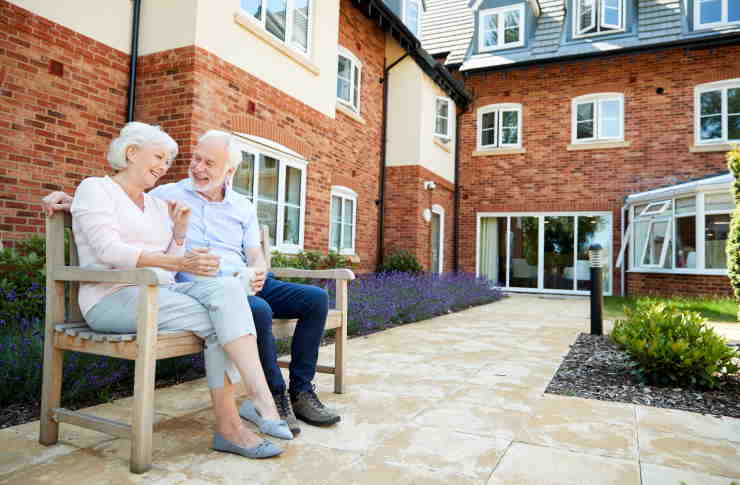Granny Pods: Modern Multi-Generational Living Solutions
Granny pods — compact, self-contained dwellings on family property — are becoming a practical choice for multi-generational living. Learn how these ADUs support seniors' independence, improve family caregiving, and what to consider about zoning, accessibility, construction, and financing before building one.

Granny Pods: Modern Multi-Generational Living Solutions
Granny pods are compact, stand-alone living units designed to let older adults live independently on family property while remaining close to caregivers. As families look for flexible alternatives to assisted living, these small dwellings provide privacy, safety, and connection—all in a single, manageable package. Below is a guide to what granny pods deliver, what families should plan for, and other housing options to consider.
How granny pods help older adults
Living in a granny pod offers seniors the best of two worlds: autonomy and immediate support. These units create a private space where older adults can maintain daily routines, host visitors, and preserve dignity, while still having loved ones nearby. That proximity reduces social isolation and makes it easier for family to notice changing health or mobility needs early.
Granny pods are typically fitted with age-friendly safety features. Common upgrades include non-slip flooring, grab bars, widened doorways for wheelchairs or walkers, step-free entrances, and emergency alert systems. The layout can be tailored to mobility and sensory needs, such as lower countertops, improved lighting, and audible/visual alarms. These adjustments help create a comfortable, secure environment that supports aging in place.
Benefits for families and caregivers
From a family perspective, granny pods can ease caregiving responsibilities without requiring cohabitation. Caregivers gain the ability to respond quickly in an emergency or provide routine assistance without disrupting household boundaries. This arrangement often strengthens intergenerational ties—grandchildren can visit more frequently, and daily interactions can become a source of mutual enrichment.
Financially, a pod on family grounds may be less costly than long-term residential care. While upfront construction and permitting fees exist, many families find the ongoing expense of utilities and maintenance to be lower than the monthly costs of assisted living facilities. In addition, keeping a loved one at home can delay or avoid placement in higher-cost long-term care settings.
Construction, permitting, and site considerations
Before beginning a project, research local zoning ordinances and building codes. Some municipalities treat granny pods as accessory dwelling units (ADUs) and have specific size, setback, and occupancy rules. Other areas may restrict additional dwellings or require special permits, inspections, or utility hookups.
Hiring an experienced contractor who knows local permitting processes and ADU standards is advisable. Key technical issues include foundation type (slab, pier, or permanent footings), connecting to existing electrical and plumbing systems, heating and cooling compatibility, and ensuring proper insulation and ventilation. Accessibility should be integrated during design to avoid costly retrofits; this includes ramp placement, bathroom layout, and path-of-travel considerations between the pod and the main house.
Safety and maintenance are also important. Install smoke and carbon monoxide detectors, consider a monitored emergency response system, and plan for seasonal maintenance like roof and gutter care. If utilities are shared, clarify responsibility for billing and upkeep in advance.
Financing options and ongoing costs
Families fund granny pods in different ways depending on resources and goals. Common approaches include:
- Paying out of pocket for construction costs
- Using home equity loans or lines of credit
- Securing specialized loans for ADU construction where available
- Combining savings, gifts, or family contributions
When budgeting, include not only the initial build but also ongoing costs: utilities, routine maintenance, landscaping, insurance adjustments, and potential increases in property taxes. A financial advisor can help weigh the costs against alternatives like assisted living or long-term care insurance payouts.
Alternatives to granny pods
Granny pods are one option among several that support multi-generational living. Depending on property, budget, and family needs, other solutions may be preferable:
| Option | Description | Key Features |
|---|---|---|
| Home Additions | Expanding the main house to add living quarters | Fully integrated with the house, shared utilities, accessible layout |
| Converted Garages | Repurposing an attached or detached garage | Cost-effective, uses existing structure, can be faster to convert |
| In-Law Suites | Dedicated bedroom/bathroom wing inside main house | Indoor access, shared common spaces, easy supervision |
| Tiny Houses | Small, often movable residences | Flexible placement, potential for relocation, lower footprint |
| Modular Granny Flats | Prefabricated units delivered onsite | Faster installation, consistent quality, customizable plans |
Prices, rates, or cost estimates mentioned in this article are based on the latest available information but may change over time. Independent research is advised before making financial decisions.
Making the right choice for your family
Choosing a granny pod—or an alternative—depends on your family’s priorities: proximity to caregivers, level of independence desired by the senior, local regulations, and budget. Start by discussing goals and daily needs with the older adult, and consult local planning departments to understand what’s allowed on your property. A contractor experienced in ADUs and a financial advisor will help you estimate true costs and timelines.
When designed thoughtfully, a granny pod can boost quality of life for seniors and ease the caregiving burden for families. It’s a practical, humane, and increasingly popular way to blend independence with support—keeping loved ones close while respecting their autonomy.
If you’re considering this option, gather local zoning information, get multiple contractor estimates, and compare financing routes to find a plan that fits both your family’s emotional needs and financial situation.






